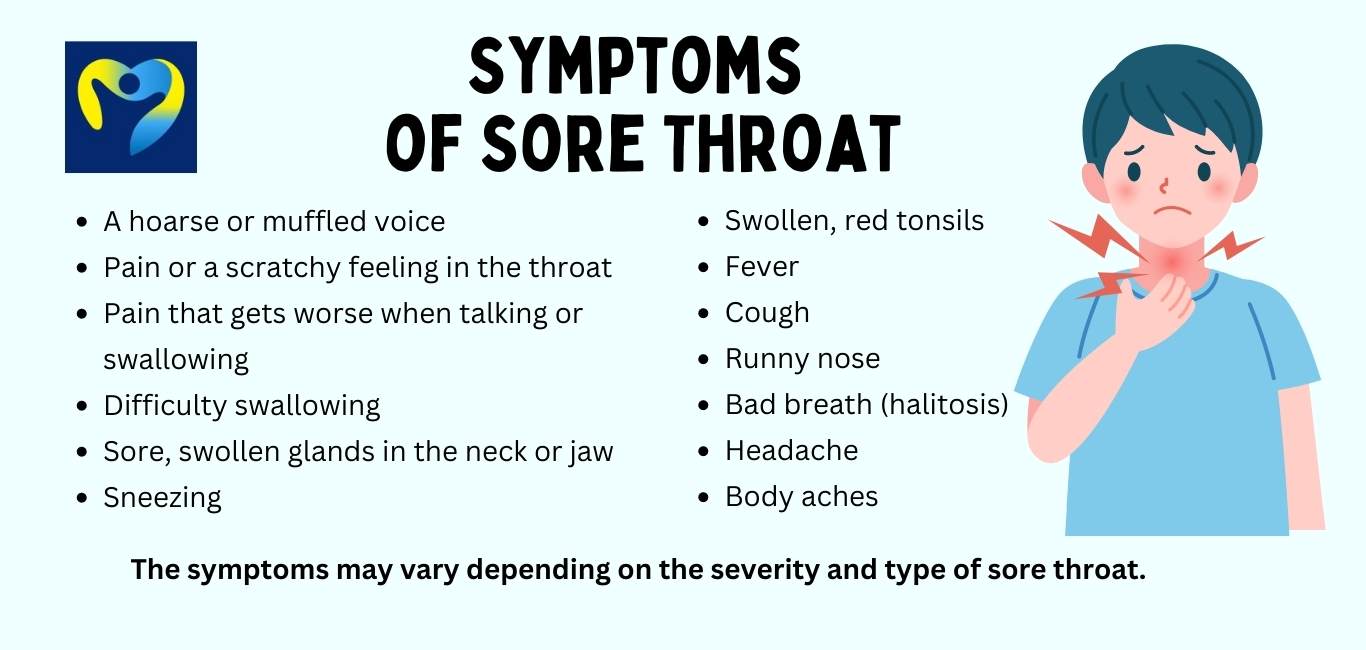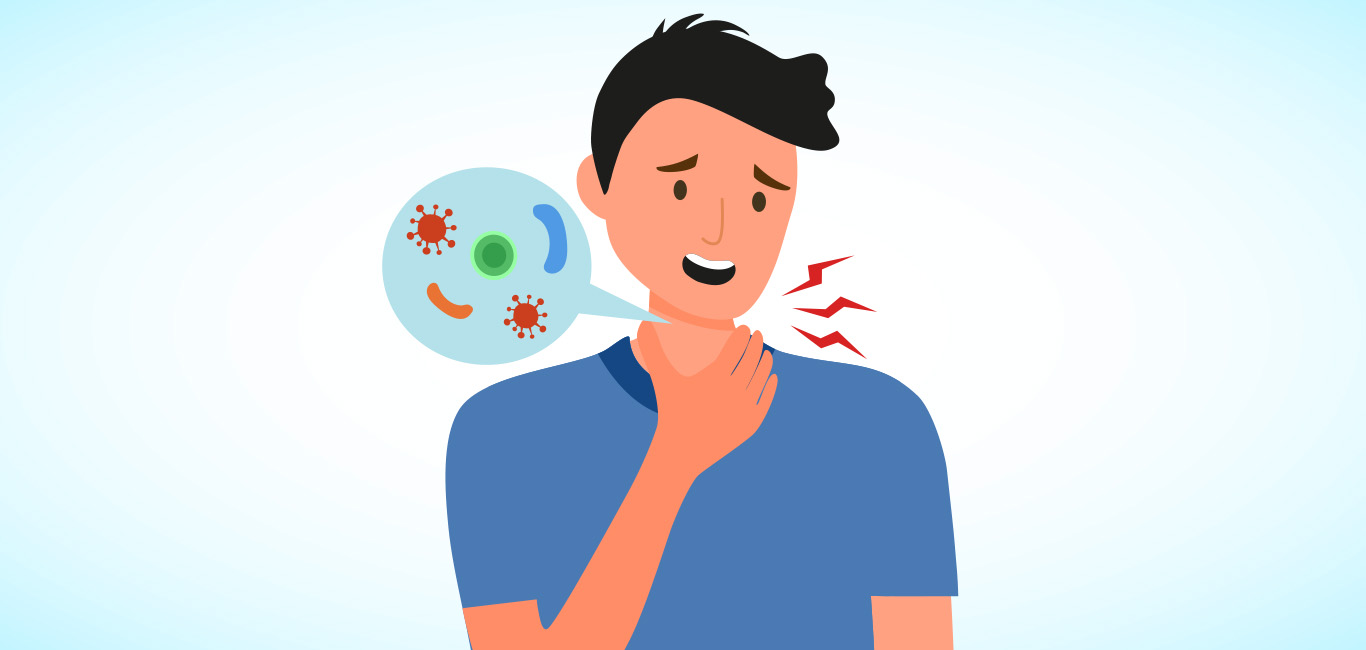
Have you ever woken up with a scratchy, prickly sensation in your throat as though you swallowed a cactus? Or perhaps you have experienced a persistent, irritating soreness in the back of your throat that simply will not dissipate.
Dr Ayush Chawla, an attending consultant in the ENT department at Sarvodaya Hospital in Faridabad, notes that sore throat is an infection that affects most of us. The condition is characterised by throat pain that can range from mild to severe, making swallowing food uncomfortable. Even everyday activities like drinking water or breathing can become a daunting task.
Guwahati-based homemaker Mani Das complained of a sore throat, which started suddenly and worsened over the course of a few days. She also had trouble in swallowing and high fever.
“I immediately consulted an ENT doctor and after an examination and a test, I was diagnosed with a bacterial sore throat,” says the 37-year-old from Guwahati. The test showed the presence of group A streptococcus bacteria, which is a common cause of bacterial sore throat.
Causes and types
According to Dr Chawla, a sore throat can be caused by infections in different parts of the throat. Depending upon the site of infection, a sore throat could be due to:
- An infection of the tonsils (tonsillitis)
- Laryngitis, which is an inflammation of the voice box also called the larynx
- Generalised infection of the throat involving multiple sites of the pharynx commonly known as pharyngitis
These infections could be bacterial, viral or fungal.
Dr Ravi Bhatia, director, ENT and Cochlear Implant, Sarvodaya Hospital, Faridabad and Dr Chawla list out the causes of bacterial, viral and fungal infections along with a few other factors:
Viral
- Rhinoviruses
- Influenza
- Parainfluenza
- Measles and chickenpox
- Coxsackie virus
- Herpes simplex
- Infectious mononucleosis
- Cytomegalovirus
Bacterial
- Streptococcus (Group A beta-haemolyticus) (the most common factor)
- Diphtheria
- Gonococcus
Fungal
- Candida albicans (especially in diabetics and immunocompromised individuals using inhalers for asthma)
- Chlamydia trachomatis
Other causes
- Allergies caused by dust, pollen, mildew, and pet dander can result in sore throats.
- Irritants include indoor and outdoor pollutants like tobacco smoke and chemicals. Eating hot food, consuming alcohol, and chewing tobacco.
- Muscle strain: Loud speech and yelling can induce throat muscle tension.
- A painful throat can be brought on by HIV infection and gastroesophageal reflux disease (GERD).
- Dryness: Mouth breathing and dry indoor air can also contribute to sore throats.

Difference between a viral and bacterial sore throat
According to Dr Chawla, bacterial infections of the throat cause severe pain along with fever, especially tonsillitis which can form white follicles over the tonsils (follicular tonsillitis) or severe redness and congestion of the throat. Viral sore throat is usually milder; however, severe symptoms can occur without the typical signs of congestion, follicles and lymphadenopathy. “Also, viral throat infections are self-limiting and resolve in a few days without any antibiotic requirement although symptomatic treatment with supportive medications may alleviate the symptoms,” he says.
Bibhaas Agasti, a 22-year-old student from Nalbari, Assam complained of a sore throat, which started gradually and worsened over the course of a few days. He also experienced a runny nose, cough, and general fatigue.
“I had a common cold and a scratchy throat for a few days, so I consulted a doctor, and he diagnosed it as a viral sore throat,” says Agasti.
Agasti was advised to rest, drink plenty of fluids, and take pain relief medication to manage the discomfort. He was also advised to take steps to prevent spreading the virus to others, such as washing his hands frequently and avoiding close contact with others.
“My symptoms gradually improved over the course of a week after taking the necessary precautions. Gargling with lukewarm saline water gave me a lot of relief.”
Treating sore throat
“I was prescribed a 10-day course of antibiotics, which helped to clear the infection and alleviate my symptoms,” says Das. She was also advised to rest, drink plenty of fluids, and take pain relief medication to manage the discomfort.
Das responded well to treatment, and her symptoms began to improve within a few days of starting antibiotics. “I was advised to follow up with her healthcare provider if her symptoms did not fully resolve or if new symptoms developed.” She completed the full course of medication and gradually got better.
Dr Bhatia says:
- Analgesics are recommended to ease pain and fever.
- Broad-spectrum antibiotics are prescribed in case of moderate to severe sore throat due to bacterial infections.
- Antihistamine and nasal decongestants are given if an individual has nasal complaints.
“Along with antibiotics, symptomatic treatment with oral gargles, anti-inflammatory medication and analgesics may be prescribed. Adequate hydration and rest are of paramount importance as well,” says Dr Chawla.

















